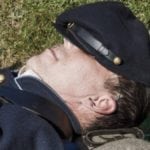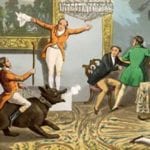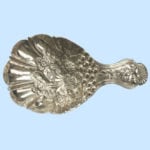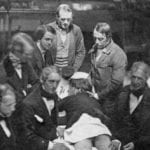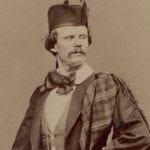 Technology
Technology  Technology
Technology  Our World
Our World 10 Ways Icelandic Culture Makes Other Countries Look Boring
 Misconceptions
Misconceptions 10 Common Misconceptions About the Victorian Era
 Mysteries
Mysteries 10 Strange Unexplained Mysteries of 2025
 Miscellaneous
Miscellaneous 10 of History’s Most Bell-Ringing Finishing Moves
 History
History 10 Great Escapes That Ended Right Back in Captivity
 Weird Stuff
Weird Stuff 10 Fascinating Things You Might Not Know About Spiders
 Food
Food 10 Everyday Foods You Didn’t Know Were Invented by the U.S. Military
 History
History 10 Odd Things Colonial Americans Kept at Home
 Weird Stuff
Weird Stuff 10 Superstitious Beliefs That Once Consumed Entire Cultures
 Technology
Technology 10 Scientific Breakthroughs of 2025 That’ll Change Everything
 Our World
Our World 10 Ways Icelandic Culture Makes Other Countries Look Boring
 Misconceptions
Misconceptions 10 Common Misconceptions About the Victorian Era
Who's Behind Listverse?

Jamie Frater
Head Editor
Jamie founded Listverse due to an insatiable desire to share fascinating, obscure, and bizarre facts. He has been a guest speaker on numerous national radio and television stations and is a five time published author.
More About Us Mysteries
Mysteries 10 Strange Unexplained Mysteries of 2025
 Miscellaneous
Miscellaneous 10 of History’s Most Bell-Ringing Finishing Moves
 History
History 10 Great Escapes That Ended Right Back in Captivity
 Weird Stuff
Weird Stuff 10 Fascinating Things You Might Not Know About Spiders
 Food
Food 10 Everyday Foods You Didn’t Know Were Invented by the U.S. Military
 History
History 10 Odd Things Colonial Americans Kept at Home
 Weird Stuff
Weird Stuff 10 Superstitious Beliefs That Once Consumed Entire Cultures
10 Wildly Eccentric Characters From Victorian England
Most people assume the Victorians were all straight-laced, sexually repressed folks obsessed with class and manners. While that’s a stereotype based in truth, many Victorians didn’t play by society’s rules. Some of the English who lived in the 19th century were the craziest of all.
10 Madame Rachel
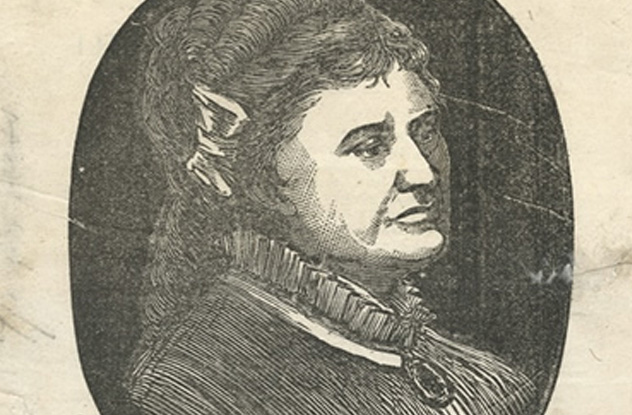
Whether it’s the fountain of youth or Botox, humans have always looked for ways to stave off old age. Back in the Victorian era, women unhappy with their looks turned to Madame Rachel and her “Costly Arabian Preparations.” Like the fabled fountain, Madame Rachel’s makeup was nothing more than a myth.
Born Sarah Rachel Russell, Madame Rachel started life as a fry cook and fortune teller. However, she soon hit on a surefire scheme that would get her out of Whitechapel and put her in a fancy home in Blackheath. She’d take advantage of London’s ladies, promising eternal beauty with miraculous makeup. Her goods were made of useless ingredients like fuller’s earth and dangerous chemicals like hydrochloric acid, but women flocked to her Mayfair beauty salon anyway.
Her popularity stemmed from her preposterous claims. For example, she said she was older than she actually was, fooling people into crediting her products for her youthful appearance. Even more convincing was her claim that she advised Queen Victoria on cosmetics. As a result, well-to-do ladies spent staggering amounts of cash on crazy products like rock water dew from the Sahara Desert—which was actually water mixed with bran. Her most popular treatment was “enameling,” a process in which Rachel poured white goo into wrinkly cracks and then slapped on some rouge and powder. It cost over $2,500 in today’s currency.
If a woman discovered she was being conned, there wasn’t much she could do about it. Back in the Victorian days, makeup was a big no-no, appropriate only for actresses and hookers. If a woman’s husband learned she was wearing cosmetics, that was grounds for divorce. So in addition to swindling her victims, Madame Rachel blackmailed them as well. She even occasionally let creepy perverts pay to look at her clients bathing in the back of her shop.
But all good cons must come to an end. After a wealthy widow with nothing to lose took Rachel to court, the cosmetologist ended up in prison for 10 years. You’d think Miss Russell would have learned her lesson, but as soon as she got out, she was arrested again for fraud. This time, she died behind bars.
9 William Marwood
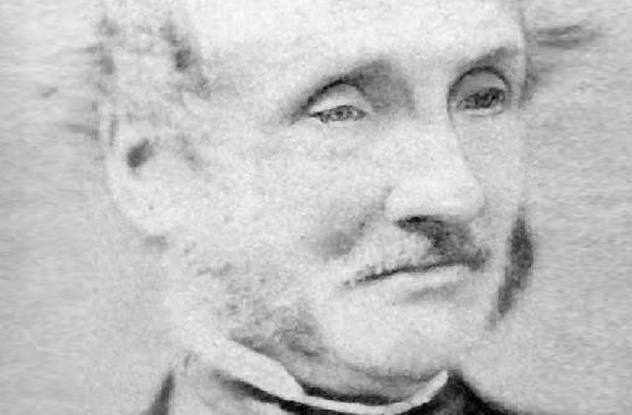
Everyone has an opinion on capital punishment, but we can all probably agree that William Calcraft was a horrible person. Originally a cobbler, he landed the job of beating juvenile delinquents before his promotion to official executioner for London and Middlesex. Around 450 people died by his hands—his incompetent, incapable hands.
Because he used a technique called the “short drop,” many of Calcraft’s victims slowly died due to asphyxiation. Occasionally, he was forced to speed up the process by grabbing their legs and pulling. The man also had a horrible deathbed bedside manner. According to Charles Dickens, who attended one of William’s little shows, Calcraft often told jokes and drank brandy while going about his business.
Calcraft retired in 1874 and was replaced by executioner extraordinaire William Marwood. Also a cobbler, Marwood got into the game as a freelancer, sending out pitches for lucrative hanging jobs. The man even printed up business cards. Without a doubt, he believed in his own abilities—and so did everyone else. Unlike Calcraft, Marwood was a professional’s professional and hated Calcraft’s sloppy work. “Calcraft hanged them,” he once said. “I execute them.”
Hoping to make hangings efficient and painless, Marwood introduced the much more effective “long drop,” supposedly created the split trapdoor, and came up with a series of extremely precise calculations. For example, he varied the length of the drop depending on the prisoner’s weight, and he always placed the knot under the left side of the jaw.
A most scientific man, Marwood replaced Calcraft and soon was servicing all the condemned criminals in London and Middlesex. Granted, no prisoner wants to die, but if they had to join the choir invisible, Marwood was the best man to arrange the trip. In total, he executed 178 people before his own death in 1883.
8 Mary Ann Girling
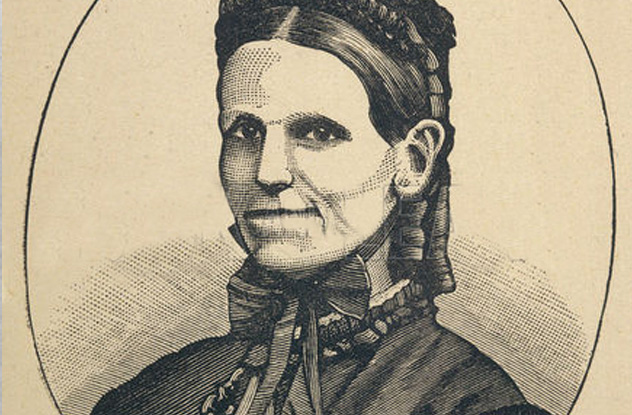
Every so often, a self-proclaimed prophet starts rambling about the end of the world. In the Victorian Era, it was a crazy Suffolk housewife named Ann Girling. Born in 1827, her life seemed normal until Christmas Day 1864. That’s when Jesus appeared in her bedroom and ordered her to give up sex.
Later, a flaming dove informed Mary that she was the female version of Christ, gave her the stigmata, and told her Judgment Day was nigh. According to the burning bird, it was Girling’s job to prepare the world for the Second Coming. Soon, she had 50 followers, but most people didn’t appreciate Mary’s gospel and chased her out of town.
After a brief stay in London, Girling led “The Children of God” to the New Forest, an area in southeast England where the 160-plus cult members bought a church and waited for the apocalypse. That waiting involved a lot of weird rules and customs. For example, buying and selling were forbidden. Men wore all black while women walked around in white blouses and bloomers. Most importantly, everyone practiced celibacy. Men and women viewed each other as brothers and sisters, and Girling was everybody’s mom. However, these inconveniences were worth it because Mother Girling promised her followers they would never die.
When the “Girlingites” weren’t busy farming, they were reading the Bible, praying, and working themselves into a frenzy. Church services often ended with dancing, speaking in tongues, and deep trances. Visiting reporters dubbed the cult the “New Forest Shakers” after the group in the US. For months, tales of the Shakers filled every English newspaper. Victorians were fascinated with these wacky woods-dwellers, but some were filled with righteous anger. Reporters accused Mother Girling of crimes, clergymen accused her of witchcraft, and an angry mob almost set her on fire.
Eventually, the cult couldn’t pay the mortgage on their church and was forced to roam the countryside. One night, they’d sleep in a barn. The next, they wound up in a tent. Unsurprisingly, membership started dropping off, and everything came to an end in 1884 when Mother Girling died of uterine cancer. So much for immortality.
A wealthy believer named Andrew Peterson nonetheless built a monument in her honor. Known as Sway Tower, it still stands in Hampshire today, a testament to the weird life of Mother Girling.
7 Tom Sayers
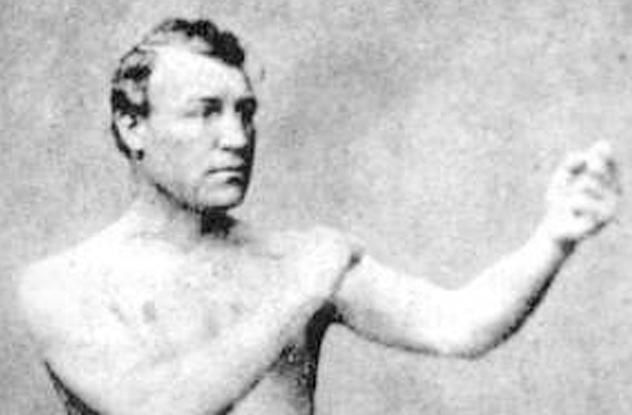
Mike Tyson and Muhammad Ali had nothing on scrappy Tom Sayers. Affectionately known as “The Little Wonder,” this British boxer stood at 173 centimeters (5’8”) and weighed 68 kilograms (149 lb), yet he regularly fought opponents who were significantly taller than him.
Sayers was an illiterate bricklayer who couldn’t even tell time, but the man had the muscles and sharp knuckles perfect for opening cuts, so he set down his trowel and entered the illegal world of bare-knuckle boxing. These underground bouts weren’t big on rules or time limits. Two guys slugged it out until somebody said uncle, and for 11 years, the “Brighton Boy” ruled the ring, losing only one fight and earning England’s heavyweight title.
Sayers was Britain’s undisputed champ until John Heenan showed up. A brawler from San Francisco, Heenan wanted a crack at the English legend, and Sayers accepted. The match was labeled the “fight of the century,” and the winner would become the first world champion.
Heenan seemed a clear winner. He stood 188 centimeters (6’2”) tall, weighed 88 kilograms (195 lb), and was nine years younger than Sayers. Still, the “clever little ring general” had fought bigger men before, and the bout drew hundreds of spectators to a field outside Farnborough. Charles Dickens, the Prince of Wales, and the Prime Minister all allegedly showed up.
The fight took place on April 17, 1860 and lasted two hours and 27 minutes. At first, the American was scoring all the points. Not only was he bigger, the ground was uneven, and Heenan had the high ground. It also didn’t help that sunlight was streaming into Sayers’s face. But when the Sun finally moved, Sayers went on the attack. Even after he broke his right arm, he pummeled away at Heenan’s eyes, hoping to turn them into ground beef.
Forty-two rounds later, Heenan pressed Sayers into the ropes, using the cords to choke the champ. As Sayers turned blue, the crowd cut the ropes and stormed the ring. Police officers (who’d been watching the last five rounds) broke up the fight, and both men were declared winners.
Even though he lost the last round, Sayers spent the night drinking champagne. Heenan spent the next two days recuperating in a dark room, his face a bloody pulp.
After the fight, Sayers retired, living off money donated by wealthy fans. Yet the boxer’s last days weren’t happy. Thanks to an adulterous wife, the champ descended into alcoholism and eventually died of tuberculosis. However, 30,000 people attended his funeral, and his last, bloody fight with Heenan even inspired the British government to create the Marquess of Queensbury rules, the codes that govern boxing to this day.
6 Benjamin Waterhouse Hawkins

The 19th century was an exciting time for paleontology. In 1822, Mary Ann and Gideon Mantell discovered iguanodon teeth in Sussex, and in 1842, paleontologist Richard Owen coined the word “Dinosauria” to describe these awesome creatures. Yet few people had any idea what the terrible lizards looked like, and that’s where Benjamin Waterhouse Hawkins came in.
An English sculptor, Hawkins was commissioned to create life-size replicas of British dinosaurs at the Crystal Palace in London. With the advice of Richard Owen, Hawkins built the first artistic depictions of dinosaurs using incredible quantities of material. For example, to build the iguanodon, the sculptor used 27 metric tons (30 tons) of clay, iron columns, iron hooping, 38 casks of cement, and hundreds of stones.
Hawkins’s dinos weren’t exactly accurate. Few complete skeletons existed, and scientists were just guessing what these beasts looked like. For example, his iguanodon resembled a rhino more than a reptile. But no one knew the difference, and after Queen Victoria opened the exhibit in 1854, millions came to admire Hawkins’s sculptures.
His work was so popular that New York City officials asked him to sculpt American dinos at the new Paleozoic Museum. For over three years, Hawkins built models and made plans. He even visited the Academy of Natural Sciences to study fossils, and it was here that he revolutionized the museum industry. At the time, bones were displayed individually. However, Hawkins reconstructed a hadrosaurus skeleton using casts. After filling in gaps with plaster, he mounted it on an iron framework, which is how dinosaurs are displayed today.
Back in New York, corrupt politicians led by “Boss” Tweed canceled the Paleozoic Museum and fired Hawkins. When the angry sculptor complained to the press, Tweed’s crew broke into his studio and destroyed all his models. While bitterly disappointed, Hawkins went on to paint prehistoric murals at the College of New Jersey (modern-day Princeton) and illustrated a book for Charles Darwin (even though he didn’t believe in evolution).
As people learned more about dinosaurs, Hawkins’s fame diminished, and he died a forgotten man in 1894. Today, however, people are starting to appreciate the man’s work. Brian Selznick, author of The Invention of Hugo Cabret, illustrated a beautiful, award-winning book in honor of this great Victorian.
5 Marianne North

We’re all familiar with the prim-and-proper ideal of Victorian womanhood, but Marianne North loved kicking down cliches. In a world where snagging a husband was considered a woman’s greatest achievement, North declared marriage was a “terrible experiment.” In her nearly 60 years on Earth, she never married nor had any kids. Instead, North dedicated her life to painting plants.
North’s life as an artist began in 1867, when she took her first painting class. She was immediately addicted, comparing painting to “dram drinking.” North also loved botany and wanted to travel the planet, capturing wild flora on her canvas. At 39, she took her inheritance from her father and set off to explore the world.
While most Victorian ladies were suffocating in England, North was putting 19th-century adventurers to shame. In 13 years, she visited America, Brazil, Japan, India, and many other countries. For the most part, she traveled alone. If someone insisted on going along to keep her safe, she found a way to escape her escort and sneak off alone into the wilderness.
North wandered until a plant caught her eye. Whipping out her canvas and oils, she set to work. Unlike other botanical artists of her day, North didn’t paint a single flower on a white backdrop. Instead, she recorded everything in the environment. With her subject in the foreground, North filled the canvas with additional flowers, rocks, and bugs. Her style was highly controversial, but it gave her paintings a feel of realism, and that was especially appreciated in the days before color photography.
Despite the haters, North’s work was wildly popular with the public, even drawing the attention of Charles Darwin, who asked North paint the plants of Australia, New Zealand, and Tasmania. In addition to its beauty, North’s artwork is so special because she painted many specimens now extinct. And during her career, she captured quite a few plants. She created over 1,000 paintings, 833 of which were placed in the Marianne North Gallery, an amazing exhibit you can visit in the Kew Gardens today.
4 Sir Thomas Phillipps
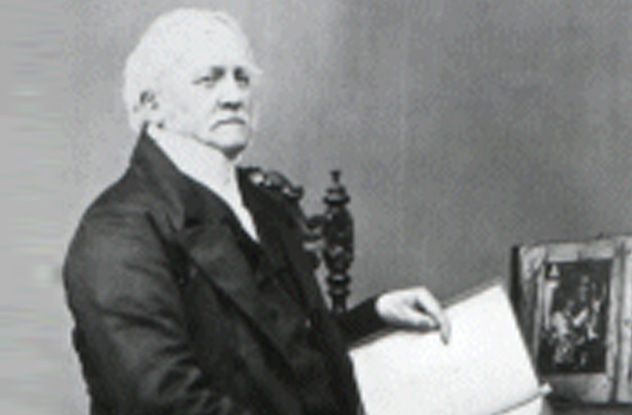
Sir Thomas Phillipps was obsessed with books. He bought 110 by the time he was six. After his wealthy father died, Thomas inherited all the property and cash that came with being baronet of Middle Hill Estate. But Phillipps wasn’t interested in maintaining the 800-acre property. Instead, he dedicated his entire fortune to buying books.
The fortune didn’t last long. Phillipps had a bad habit of buying entire bookstores. Soon, he’d racked up so much debt that he started scamming sellers with promises of money he didn’t have. One poor fellow even went bankrupt thanks to Thomas’s schemes. However, the booksellers had it easier than Phillipps’s family.
Over the course of his life, Phillipps had two wives and three daughters, and they suffered as much as any saint. Almost all of Middle Hill’s 21 rooms were packed full of books, and it was the family’s job to care for Phillipps’s prized possessions. There were so many books that his first wife had to stand on her bed to get dressed. Phillipps didn’t pay his servants and kept firewood lying around the house to draw beetles away from his precious tomes. The books were kept inside coffins so they could be hauled outside in case of a fire.
Things got worse when one of his daughters eloped with James Orchard Halliwell. Phillipps had hated Halliwell, who’d once gotten in trouble for stealing manuscripts. Furious that a book thief would one day inherit his home, Phillipps declared war on his daughter and her new husband.
After moving his books into a new mansion (and not paying the movers), Phillipps destroyed Middle Hill Estate. Workers hacked down all the beautiful trees, and servants tore up all the gardens. Phillipps then abandoned the house, leaving it open to the elements and thieves. Looters made off with everything from the windowpanes to the stair steps. Finally, this despicable man died at 80, leaving his daughter a ruined mansion—and thousands and thousands of rare books. Known as the Bibliotheca Phillippica, this collection is still being sold off today.
3 Fanny Park And Stella Boulton
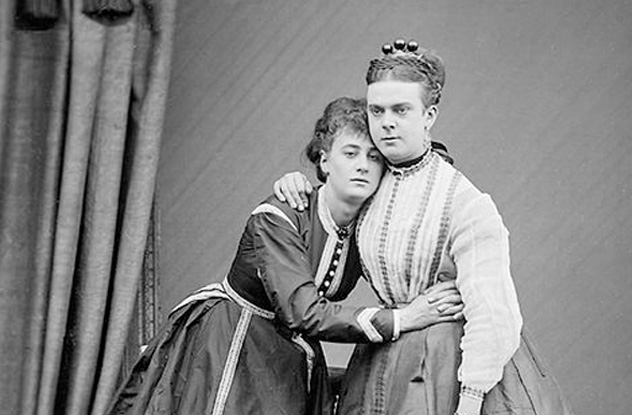
Thomas Boulton and Frederick Park were more comfortable in dresses than jackets. After renaming themselves “Fanny” and “Stella,” the two started their own show as female impersonators, entertaining audiences across the country. That wasn’t the only way they paid the bills. When they weren’t up on stage, this cross-dressing duo worked as prostitutes, and by all accounts, they were quite good at what they did.
Things were going well for Fanny and Stella until everything fell apart in 1870. It was an April evening, and Thomas and Frederick were attending a show at the Strand Theater. When they thought no one was looking, they threw on their dresses and reemerged as Fanny and Stella. The two spent the rest of the evening flirting with potential customers, but before they could head home with their new friends, a police officer flashed his badge.
The suspicious officer had followed them the whole evening. “I have every reason to believe that you are men in female attire,” he declared, as he placed them under arrest for “conspiring and inciting persons to commit an unnatural offence.” For two hours, six doctors thoroughly examined Fanny and Stella to see what they’d been up to. When the physicians decided the pair was innocent of sodomy, the prosecuting attorneys changed the charges to “conspiracy to solicit, induce, procure, and endeavor to persuade persons unknown to commit buggery.”
Dubbed the “Funny He-She Ladies” by newspapers, Park and Boulton had their lives turned upside down by prosecutors. It’s even believed that Stella’s lover, a politician named Lord Arthur Clinton, committed suicide to avoid showing up in court. However, after a trial that left many jaws dropped and sensibilities shocked, the jury decided Fanny and Stella were innocent. After all, wearing women’s clothing wasn’t a crime, and no one could prove they were conspiring to commit anything. Of course, they probably were, but Fanny and Stella weren’t about to admit it.
2 Wilkie Collins
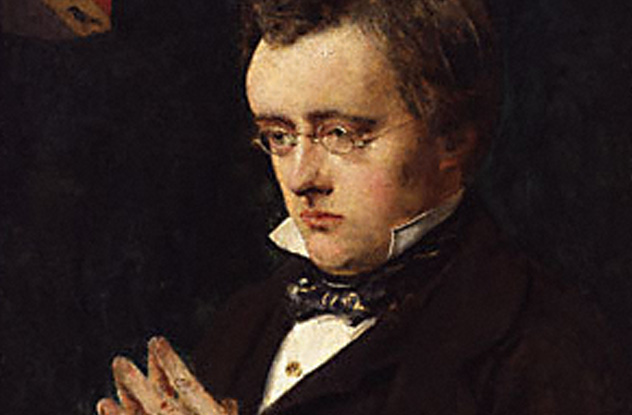
Wilkie Collins enthralled readers with murder, adultery, and doppelgangers. His books made truckloads of money—his novel The Woman in White inspired its own clothing and perfume, and his thriller The Moonstone outsold Charles Dickens’s last two novels. However, Collins’s private life was more interesting than his stories.
A man with no time for marriage, he kept two mistresses in separate homes, one posing as his housekeeper and the other a barmaid who gave him three kids. To make sure no one discovered his scandalous setup, he doctored census returns and continually lied to his landlords. He also traveled around Europe with Dickens, visiting brothels and picking up nasty diseases.
But Collins’s biggest claim to craziness was his crippling laudanum addiction. For most of his life, Collins moaned over constant aches and pains. It’s possible he was suffering from gout, but he might’ve been a victim of his own hypochondria. Either way, he turned to laudanum as a cure for his ailments. Over the next 20 years, he morphed into a junkie, carrying a flask wherever he went and chugging wine glasses of the stuff at least twice a day. This drug abuse led to some horrifying visions.
Collins was convinced he was surrounded by ghosts. Then there was the woman who lived in his house. She had green skin and jagged tusks, and whenever Wilkie went upstairs, she tried to hurl him down the steps. But perhaps the eeriest of his creatures was the “second Wilkie Collins.” When Collins wrote at night, this shadow-self would show up and try to steal his writing pad. Once, the two Wilkies actually battled it out. The bearded author then gave up his late-night writing sessions.
1 Sir Richard Francis Burton
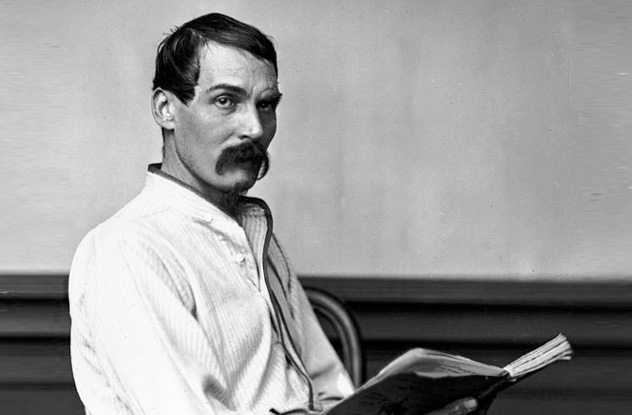
This 19th-century explorer had a life so wild it filled 43 autobiographies.
First, Burton was a linguistic genius. The man could speak over 40 languages. He was also a master of disguise. While a captain serving in India, he’d dress up as a native and mill around the markets, spying on enemies and picking up information. He even infiltrated several gay brothels and closed them down. But his most unbelievable exploit was the time he disguised himself as an Afghani Muslim and sneaked into Mecca. He even had the audacity to sketch and measure the Kaaba.
Burton’s big dream was to discover the source of the Nile. In 1855, he led an expedition into Africa, but along the way, he was attacked by angry natives and took a javelin to the jaw. That put a dent in his plans, but he spent his downtime training Turks to fight Russians in Crimea. After that war ended, he restarted his Nile expedition, and while he never discovered the source, he did become the first European to see Lake Tanganyika, the longest freshwater lake in the world. He couldn’t really enjoy the moment, though, as he was so ill with malaria he literally couldn’t walk any farther.
Despite his Nile River setbacks, his adventures were far from over. After visiting the Mormons in Utah, he served as English consul in Brazil, Damascus, and an island off the coast of West Africa, where he hung out with various tribes and recorded their customs. Finally, he ended up in Italy, where he became a prolific translator. In the last years of his life, Burton’s desire was to translate Eastern erotica into English. The man who could speak 40 languages spent his time working on books like The Kama Sutra, The Perfumed Garden, and an uncut and scandalous version of Arabian Nights. He even formed the Kama Shastra Society, a group dedicated to printing erotic literature.
Before his death in 1890, Burton was knighted by Queen Victoria for his amazing life. Unfortunately, many of his adventures remain a mystery as his Roman Catholic wife destroyed most of his diaries to cover up her husband’s rascally ways.
Nolan Moore was inspired to write this list after reading Drood by Dan Simmons. It’s quite a crazy book. If you want to keep up with Nolan’s writing, you can friend/follow him on Facebook, or if you want, you can email him here.
